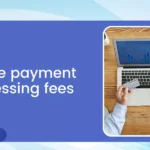In today’s digital age, seamless payment processing is the lifeblood of any successful online business. As eCommerce continues to surge, providing customers with convenient and secure payment options is paramount. However, navigating the landscape of eCommerce payment fees can take time and effort for business owners. From transaction charges to gateway fees, understanding the intricacies of these costs is essential for maximising profitability and ensuring a smooth customer experience.
With the rise of online transactions, businesses are increasingly turning to reliable payment processing solutions to streamline their operations. One such solution is Stripe, a leading player in the eCommerce payment industry. We offer a powerful tool, the Stripe Fee Calculator, to help businesses better understand and estimate payment processing costs. This tool empowers business owners to accurately forecast their expenses and optimise their pricing strategies, ultimately driving growth and success in the competitive eCommerce landscape.
This blog post will delve into eCommerce payment fees, exploring the costs of online transactions and payment processing. From transaction fees to gateway charges, we’ll break down the components of eCommerce payment fees and provide insights into how businesses can effectively manage and optimise these costs. Whether you’re a seasoned eCommerce veteran or just starting your online business journey, understanding eCommerce payment fees is crucial for success. Join us as we unravel the complexities of eCommerce payment fees and discover strategies for navigating this critical aspect of online business.
Core Transaction Fees: The Foundation
In the realm of payment processing, core transaction fees serve as the fundamental building blocks of the financial framework. These fees encompass a percentage charge, typically around 2.9%, and a fixed per-transaction fee, commonly 30 cents. This structure ensures that for every successful transaction processed through Stripe, a portion of the total amount received is allocated to cover operational costs and facilitate the smooth functioning of the payment ecosystem.
Understanding these core transaction fees is crucial for businesses as they directly impact the profitability of each transaction. By grasping the underlying mechanics of these fees, businesses can accurately forecast their financial commitments, assess the viability of their pricing strategies, and optimise their operational efficiency. Ultimately, by mastering the intricacies of core transaction fees, businesses can confidently navigate the payment landscape, making informed decisions that drive sustainable growth and success.
1. Breakdown of Percentage Fees
Percentage fees are a fundamental component of the fee structure employed by most payment processors, including industry giants like Stripe. Typically set at a standard rate, such as 2.9%, these fees represent a percentage of the total transaction amount. For example, if a business processes a $100 transaction, the percentage fee would amount to $2.90. This fee is levied on every transaction and is designed to cover various operational expenses associated with payment processing, including infrastructure maintenance, security measures, and fraud prevention mechanisms.
The rationale behind percentage fees is to ensure the payment ecosystem’s sustainability and security. By charging a percentage of each transaction, payment processors can generate revenue to invest in robust infrastructure, advanced security protocols, and continuous innovation. This not only enables seamless payment processing but also enhances trust and confidence among businesses and consumers. Moreover, the percentage fee structure ensures that payment processors can adapt to evolving market dynamics and emerging threats, thereby safeguarding the integrity and reliability of the payment ecosystem. In essence, understanding and appreciating the role of percentage fees is essential for businesses to grasp the true cost of payment processing and make informed decisions to optimise their financial operations.
2. Per-Transaction Charges: A Fixed Cost
Per-transaction charges represent a fixed cost imposed by payment processors for every transaction processed, irrespective of the transaction amount. For instance, Stripe applies a standard per-transaction charge of $0.30 to each processed transaction. This fixed fee remains constant regardless of the size of the transaction, meaning that whether a business processes a $10 or $100 transaction, the per-transaction charge remains $0.30.
To illustrate the impact of per-transaction charges on overall costs, consider a scenario where a business processes 100 monthly transactions. At $0.30 per transaction, the total per transaction charges for the month amount to $30. However, if the transaction volume increases to 500, the total per-transaction charges would rise to $150.
For high-volume businesses, per-transaction charges can significantly impact overall processing costs, mainly when dealing with many transactions. Therefore, businesses must consider these fixed fees when calculating payment processing expenses. Failure to adequately account for per-transaction charges can lead to an underestimation of costs and potentially affect the business’s profitability. Hence, businesses must carefully assess their transaction volume and associated per-transaction charges to make informed decisions and optimise their cost structure effectively.
Unveiling Additional Fees: A Look Beyond the Basics
In “Unveiling Additional Fees: A Look Beyond the Basics,” we delve into the often-overlooked fees associated with payment processing beyond the core transaction charges. While the standard percentage fees and per-transaction charges are widely understood, this article sheds light on the less-discussed but equally essential fees. By exploring integration costs, PCI compliance fees, and other miscellaneous charges, businesses comprehensively understand their true payment processing expenses. With this insight, businesses can make more informed decisions, optimise their cost structures, and ensure transparency in their financial operations. Join us as we uncover the intricacies of payment processing fees and empower businesses to navigate the landscape confidently.
1. Chargeback Fees: Understanding the Cost of Disputes
Chargeback fees are incurred when a customer disputes a transaction, resulting in a reversal of funds. These disputes commonly arise from fraudulent activity, such as unauthorised card usage or disagreements between the customer and merchant regarding the quality of goods or services received.
Chargebacks can be costly for businesses, as they lose the sale amount and incur additional fees imposed by payment processors. These fees typically cover administrative costs associated with managing the dispute process, including investigation and resolution efforts.
It’s essential for businesses to actively monitor and address chargebacks to minimise their impact on revenue and reputation. Implementing robust fraud prevention measures, providing clear product descriptions and terms of service, and offering responsive customer support can help mitigate the risk of chargebacks. Additionally, promptly addressing customer concerns and disputes can prevent escalation to formal chargeback requests.
Understanding chargeback fees and the underlying causes of disputes enables businesses to develop proactive strategies for reducing their occurrence and managing associated costs effectively.
2. International Transaction Fees: Expanding Your Reach, But at a Cost
International transaction fees are additional charges incurred when processing customer payments outside the merchant’s country. These fees are attributed to various factors, including currency conversion and cross-border processing.
Currency conversion fees apply when the transaction involves converting the customer’s currency into the merchant’s local currency. Payment processors typically charge a percentage-based fee for this service, which varies depending on the currencies involved and prevailing exchange rates.
Cross-border processing fees are levied due to the added complexity and risk associated with processing payments across different countries. Payment processors may charge an additional percentage fee or a flat rate to facilitate cross-border transactions.
While expanding internationally offers businesses opportunities to reach new markets and customers, it’s essential to consider the associated fees. These fees can impact the overall cost of doing business and affect profit margins. Businesses should weigh the potential benefits of international expansion against the incremental expenses incurred through additional transaction fees. Additionally, exploring strategies to minimise these fees, such as optimising currency exchange rates and leveraging multi-currency payment solutions, can help mitigate the financial impact of international transactions.
Beyond Transaction Fees: Additional Cost Considerations
In addition to transaction fees, businesses should consider other cost factors when evaluating payment processing services. These may include setup fees, chargeback fees, monthly subscription costs, and additional charges for services like international transactions or PCI compliance.
Understanding and factoring in these supplementary expenses is crucial for accurate cost analysis and budgeting. Businesses can make informed decisions and choose the most cost-effective solution by comprehensively assessing all potential fees associated with a payment gateway.
1. Connecting Your Platform to the Payment Gateway
Integration costs are incurred when connecting a payment gateway to an eCommerce platform. These costs may include development fees for custom integrations, subscription charges for using pre-built plugins or APIs, and additional technical support or maintenance costs.
The complexity of the integration process, the level of customisation required, and the development team’s expertise can all impact the overall integration costs. Businesses need to budget for these expenses and carefully evaluate the integration options available to ensure seamless connectivity between their platform and the chosen payment gateway.
2. PCI Compliance Costs: Maintaining Security Standards
PCI compliance is crucial for eCommerce businesses and payment gateways as it ensures the security of sensitive cardholder data during online transactions. The Payment Card Industry Data Security Standard (PCI DSS) sets guidelines and requirements for securely handling payment information, reducing the risk of data breaches, fraud, and identity theft. Achieving and maintaining PCI compliance involves implementing robust security measures, such as encryption, access controls, network monitoring, and regular vulnerability assessments.
Non-compliance with PCI standards can result in severe consequences, including fines, penalties, and reputational damage. Moreover, businesses that fail to meet PCI requirements may be at a higher risk of security breaches, leading to financial losses and loss of customer trust.
To maintain PCI compliance, eCommerce businesses and payment gateways must invest in security technologies, conduct regular security audits and assessments, and diligently adhere to PCI DSS guidelines. While achieving compliance may involve upfront costs and ongoing investments, the long-term benefits, such as enhanced security, customer trust, and regulatory compliance, far outweigh the associated expenses.
Understanding Payment Processor Pricing Models
Payment processor pricing models vary, but they typically include a combination of transaction fees, interchange fees, and additional charges for specific services or features.
Understanding these pricing structures is essential for businesses to accurately calculate payment processing costs and choose the most cost-effective solution. By analysing the various components of payment processor pricing models, businesses can identify opportunities to optimise their expenses, minimise fees, and maximise their bottom line.
1. Interchange Fees
Interchange fees are charges imposed by card networks like Visa and Mastercard on every transaction processed through their payment networks. The card networks set these fees and are typically paid by the merchant’s bank to the cardholder’s bank as compensation for facilitating the transaction. The interchange fees can vary based on factors such as the type of card used, the nature of the transaction (e.g., in-person or online), and the merchant’s industry.
These fees cover various costs associated with processing transactions, including fraud prevention, network maintenance, and cardholder rewards programs. While payment processors like Stripe do not directly control interchange fees, they are an essential component of the overall cost of payment processing. Understanding interchange fees is crucial for merchants to accurately assess payment processing expenses and make informed decisions about payment acceptance strategies. Additionally, businesses can explore strategies to minimise interchange fees, such as optimising transaction types and implementing fraud prevention measures to reduce processing costs.
2. Navigating Interchange Fees
While payment processors like Stripe don’t have direct control over interchange fees, they are crucial in facilitating transactions subject to these charges. Interchange fees are a significant component of the overall processing cost borne by merchants. Despite not being directly negotiable, merchants can still take steps to mitigate the impact of interchange fees on their bottom line.
Understanding how interchange fees are assessed and incorporating this knowledge into pricing strategies can help businesses optimise payment processing expenses. By leveraging data analytics, implementing fraud prevention measures, and optimising transaction types, merchants can potentially reduce the overall impact of interchange fees on their processing costs. While payment processors cannot eliminate interchange fees, they can provide valuable insights and tools to help merchants navigate these costs effectively and maximise their profitability in the ever-evolving landscape of electronic payments.
Estimating Your eCommerce Payment Fees
1. Critical Factors Affecting Your Costs
When estimating your eCommerce payment fees, it’s crucial to consider several key factors that can significantly impact your overall expenses:
- Average Transaction Value: The value of your transactions plays a pivotal role as higher transaction amounts typically result in higher overall fees due to the percentage-based fee structure.
- Transaction Volume: Processing larger volumes can qualify you for lower per-transaction fees or volume discounts offered by payment processors, making it essential to assess your transaction volume accurately.
- Payment Methods Accepted: Fees can vary based on the accepted payment method, with credit cards typically incurring higher fees than ACH transfers or other alternative payment methods.
- Business Model: Your business model influences the fees you’ll encounter. For instance, subscription-based models may incur recurring billing fees, while marketplaces might need to consider payout fees associated with seller transactions.
Considering these factors holistically will help you make informed decisions about payment processing solutions and optimise your eCommerce payment fees effectively.
2. Leveraging Fee Calculators and Pricing Tools
Payment processors often provide online fee calculators and pricing tools to assist businesses in estimating their potential costs accurately. These tools typically allow users to input parameters such as transaction volume, average transaction value, and accepted payment methods. The calculator can estimate the fees businesses can expect to incur by analysing this data.
These tools are invaluable for businesses as they provide transparency and clarity regarding the cost structure of payment processing services. By using fee calculators and pricing tools, businesses can compare different payment processors, understand the impact of various factors on their fees, and make informed decisions about which solution best aligns with their budget and requirements.
Furthermore, fee calculators empower businesses to forecast and budget more effectively, enabling them to accurately anticipate their financial obligations related to payment processing. Overall, leveraging these tools allows businesses to gain insights into their potential costs, optimise their payment processing strategies, and ultimately enhance their financial management practices.
Conclusion
understanding eCommerce payment fees is essential for businesses to manage their finances and optimise their operations effectively. Businesses can gain valuable insights into their payment processing expenses by delving into the intricacies of transaction fees, chargeback fees, international transaction fees, and other associated costs. Moreover, being aware of integration costs and PCI compliance fees allows businesses to budget accordingly and ensure compliance with industry standards.
While eCommerce payment fees may seem complex, leveraging fee calculators and pricing tools offered by payment processors can simplify the estimation process and clarify potential costs. These tools enable businesses to make informed decisions, compare different payment processing solutions, and forecast their financial obligations accurately.
Ultimately, by carefully analysing and managing eCommerce payment fees, businesses can streamline their operations, enhance financial transparency, and improve overall profitability. Embracing a proactive approach to understanding and optimising payment processing costs empowers businesses to thrive in the competitive eCommerce landscape while providing customers with seamless and secure payment experiences.
FAQ’s
What is an ecommerce transaction fee?
An ecommerce transaction fee is a charge imposed by payment processors for processing online transactions. It typically consists of a percentage of the transaction amount plus a fixed fee per transaction.
What is the fee for online payments?
The fee for online payments varies depending on the payment processor and the type of transaction. It usually includes a percentage of the transaction amount along with a fixed fee per transaction.
What is transaction cost in e-commerce?
Transaction cost in ecommerce refers to the expenses incurred during the process of conducting online transactions. This includes payment processing fees, chargeback fees, currency conversion fees, and any other associated costs.
Is there any charges for online payment?
Yes, there are charges for online payments, typically in the form of transaction fees imposed by payment processors. These fees cover the cost of processing online transactions and maintaining the payment infrastructure.
How much does GPAY charge per transaction?
The charges for transactions on GPAY or any other payment platform vary depending on the service provider and the specific transaction. GPAY may charge a percentage of the transaction amount plus a fixed fee per transaction.
What is the transaction fee charges?
Transaction fee charges refer to the fees imposed by payment processors for processing transactions. These charges usually include a percentage of the transaction amount along with a fixed fee per transaction.
What are the four types of transaction costs?
The four types of transaction costs are search and information costs, bargaining and decision costs, policing and enforcement costs, and coordination and governance costs.
Does e-commerce reduce cost?
Yes, ecommerce can reduce costs for businesses in various ways, such as lower overhead expenses, reduced marketing costs, streamlined inventory management, and increased operational efficiency.
How is the transaction fee calculated?
Transaction fees are typically calculated as a percentage of the transaction amount plus a fixed fee per transaction. The exact calculation method may vary depending on the payment processor and the specific terms of the agreement.
What are the three types of fees?
The three types of fees commonly associated with ecommerce transactions are transaction fees, monthly fees, and incidental fees (such as chargeback fees or currency conversion fees).
Who charges processing fees?
Payment processors charge processing fees for facilitating online transactions. These fees cover the cost of processing payments, maintaining the payment infrastructure, and mitigating risks associated with fraud and chargebacks.
Why is there a processing fee?
Processing fees are charged to cover the costs incurred by payment processors for processing online transactions, including transaction processing, fraud prevention, customer support, and maintaining the payment infrastructure.
Why is e-commerce expensive?
Ecommerce can be expensive due to various factors such as platform fees, payment processing fees, marketing expenses, inventory management costs, shipping fees, and customer acquisition costs. However, it also offers opportunities for cost savings and efficiency improvements compared to traditional brick-and-mortar businesses.










